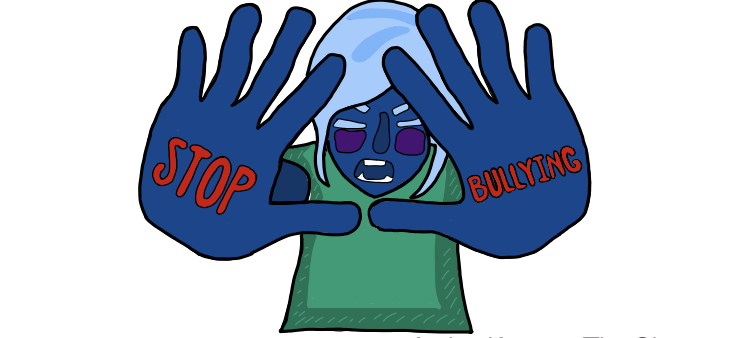Bullying is defined as the “ongoing and deliberate misuse of power in relationships through repeated verbal, physical and/or social behavior that intends to cause physical, social and psychological harm.” There are many forms of bullying including physical bullying, verbal bullying and cyberbullying.
Bullying can be caused by a variety of factors. Past trauma, for example, can cause someone to lash out at others. A lack of positive role models, an undeveloped sense of empathy and biased views can also push an individual to bully. Regardless of the reason, bullying is never acceptable, and school communities need adequate resources that properly address and help to prevent bullying.
In order to eliminate bullying, we must first understand the impact of bullying on victims, bystanders and even the bully themselves. Victims can suffer from depression, anxiety, poor academic performance and low self esteem even after the bullying stops. And not only is bullying destructive to the mental health of victims, but it can also create a vicious cycle of violence if victims choose to retaliate. Even the bystanders who witness bullying risk higher rates of substance use, mental health issues and poor school attendance. Bullies, too, risk higher rates of substance abuse, worsened academic performance and increased difficulty forming relationships. It is in the best interest of everyone, therefore, to strongly enforce anti-bullying measures in schools and teach students how bullying starts and how to identify and prevent it.
Moreover, many dangerous myths have spread that only further add to the trauma bullying victims face. Despite what some people might think, bullying is not a normal part of childhood, and bullies are fully capable of controlling themselves. Believing otherwise means actively contributing to a culture where victim blaming is encouraged. It is important that measures to prevent bullying also focus on reframing the thought processes and beliefs associated with it. Victims aren’t weak, and no one ever “asks” to be bullied.
With the efforts of our peers, parents and school faculties, we can put an end to bullying. Schools should work towards creating an environment where students can comfortably discuss bullying free from fear that bullies might retaliate or that victims might be mocked. School administrations and government leaders should devote more resources towards educational programs where students can learn about bullying and its negative effects and about how to stand up against bullying and ask for help. This, too, helps to establish that bullying is not “cool,” but rather, quite harmful to all involved. Sometimes, bullies don’t realize the harm that they cause others or weren’t raised in an environment where bullying was corrected. Raising better awareness would help to prevent bullying that stems from either of these influences. Schools should consistently monitor their students and take action immediately instead of simply ignoring bad behavior. Parents should step in as well by teaching their children healthy interpersonal habits that can help both victims and bullies. With these strategies, we can help to prevent future bullying.
In life, we often face conflict. It is unavoidable; but luckily, there are constructive methods for overcoming said conflict, such as voicing frustrations and insecurities in a healthy manner and respectfully talking through a conflict with another person. Bullying is a double-edged sword and is detrimental to everyone, but it doesn’t have to be this way. We all can—and should—work together to put an end to bullying.



